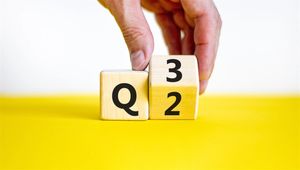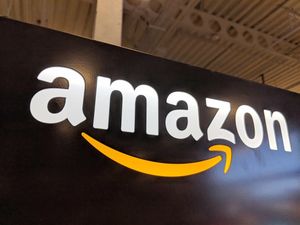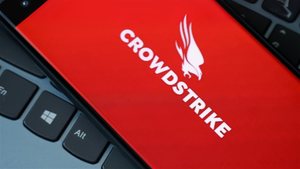ource: Getty ImagesBihar, a state in northern India, recently had a beggar walking about with an old metal bucket for contributions and a tablet computer attached to the rear, both of which had a QR code attached to them. Several months ago, Raju Prasad began collecting contributions using mobile payment apps.
When Prasad started accepting payments via mobile-payment applications, his daily earnings of approximately 300 rupees (around $4) almost quadrupled. Instead of fumbling with their wallets to transmit a few rupees, many travelers now pay using their cellphones. In Bihar, India’s poorest state, farmworkers earn an average of $4 per day.
Beggars and their benefactors are both a part of the digital financial revolution in India, which has led to an explosion in mobile payments. Profitability is a problem for Google LLC and its Flipkart subsidiary of Walmart Inc., as well as Paytm, a local rival.
Since the beginning of this year, the Indian populace has been increasingly relying on digital banking services. Many factors contribute to this, including a growing middle class, more affordable and better access to the internet, and the prominence given to digital transformation in government policy by Prime Minister Narendra Modi.
‘Digital India’ was founded in 2015 to boost the economy by pushing public services and financial services online and integrating the country’s impoverished masses into the formal economy via technological investment. This is especially true for people in rural regions
Honestly, it was only after the epidemic that things started to shift. Because of the lockdowns, millions of people were forced to shop for food and medication using smartphone applications. Consequently, ATMs ran out of cash because individuals were afraid of contracting the virus by touching actual money.
According to S&P Global Market Intelligence, mobile payments in India increased from $475 billion in 2016 to $1.3 trillion in 2017. S&P Global Market Intelligence predicts that in the second quarter of 2020, mobile payments will outpace ATM withdrawals by 30% of private spending.
In India, PhonePe’s registered users increased by 50%, according to Covid-19 India. Millions of Indians used mobile applications to purchase food and medication during the outbreak. One hundred sixty-five million active users and 48 percent of India’s mobile payments by value, according to S&P Global, with Google and Paytm each accounting for 40 percent.
More than twice as many digital payments were made in India as in China, the second-most active nation, in 2017, according to ACI Worldwide (ACI Worldwide April 2018).
There are more than 1.4 billion people in India, and the country’s attraction isn’t based on short-term profitability but instead on the possibility of grabbing the over $80 billion population. According to observers, digital-payment companies in India are now suffering huge losses.
Payment systems in India have evolved uniquely. Mobile payment infrastructure in China and the United States, the two major digital-payment economies by value, was created by private companies. The National Payments Corporation of India (NPCI), a non-profit organization that governs retail payments in India, was responsible for establishing the technology infrastructure.
According to NPCI’s managing director and CEO, Dilip Asbe, digital payments are seen as a public utility in the same way the energy infrastructure is. Companies were then asked to create applications on the Unified Payments Interface (UPI), a framework that NPCI had built-in 2016.
Mr Asbe claims that India has all three components necessary for UPI to be successful: ID cards, bank accounts, and smartphone use. The government of Prime Minister Narendra Modi has urged citizens to get biometric ID cards and open a bank account for each household.
Over the last six years, the percentage of people with a bank account has increased from 35 percent to 80 percent. In February 2018, Deloitte estimated that 750 million individuals worldwide were using smartphones.
UPI’s platform may be used with any other. To pay, customers scan QR codes connected to individuals and businesses; they may also search them using their phone numbers and virtual addresses. UPI’s applications may scan QR codes.
In the United States, you can’t use PayPal’s (NASDAQ: PYPL) Venmo app to scan the checkout QR code. In the two years leading up to March 2018, the pandemic increased UPI users by 85% to 250 million. There are currently over 300 banks and twenty different payment apps to choose from.
Incentives like rebates and freebies have helped mobile payments thrive, but the ease with which users may change applications has also harmed the businesses that rely on them.
Marketing and educating merchants and customers about how mobile payments operate have cost them a lot of money. Over 90% of India’s nearly $900 billion annual retail sector is dominated by tiny, family-owned firms because of the 3% to 4% fees they impose. Several smaller retailers and their consumers signed up for the UPI-based payments charge ban in 2020 because of this.
The restriction has also been recognized as a significant hurdle to profitability by payment service providers. Several payments businesses petitioned the government in January to do rid of the rule, claiming it had cost the country over $700 million in lost revenue.
According to experts, it would be many years before any mobile payment business in India makes a profit. Both Google and Walmart can afford to lose money while building market dominance while local businesses are vying for clients.
According to Sampath Sharma Nariyanuri, an analyst at S&P Global Market Intelligence, digital-payment companies want to expand into additional areas in the future. Google Pay has just made it possible for businesses to build virtual stores in the app.
Paytm, on the other hand, is attempting to get a regulatory license to begin selling insurance. It’s a television commercial for insurance. Stores and kiosks along the main road of Bakharia, a hamlet in Bihar, display placards or stickers with QR codes.
Ranjan Patel, who owns a small betel nut business, had to sign up for various applications as customers started requesting that they be able to pay with their cellphones.
The post India’s Mobile Payments Flourishes: Beggars Go Digital With QR Code Placards appeared first on Best Stocks.







